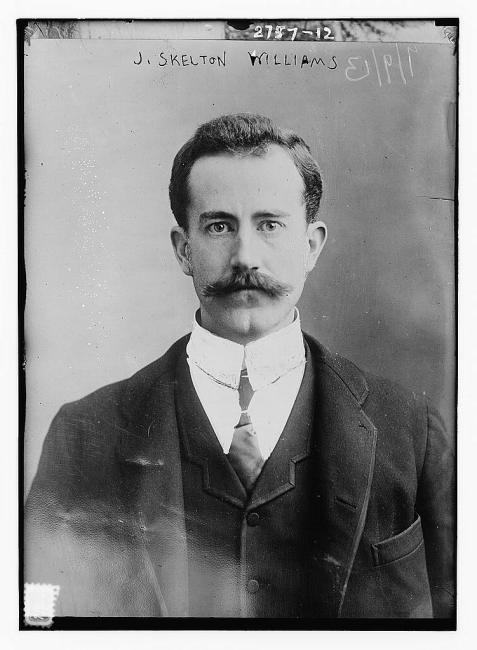An advertisement in The Thomasville Times-Enterprise, December 23, 1919, Thomasville, GA says something interesting about life in this region in the early 1900s.
LIVE POSSUMS
We are in the market for live possums and
PAY 15c. A POUND for them
in any number

Live Possums Wanted. The Thomasville Times-Enterprise, December 23, 1919.
According to numerous South Georgia newspaper accounts, possum hunting was very popular in the early 1900s, and possum was considered excellent fare for special occasions, entertaining guests, or even Christmas dinner.
In December of 1913, a “Possum Supper” was put on by the Mashburn Drug Company of Valdosta, for local doctors and drug company representatives. One attendee of the special event was Dr. A. L. Johnston of Valdosta, who also provided services for Ray City residents.
And the Valdosta Times declared when President-elect William Howard Taft visited Atlanta in 1909, “The great feature of the banquet [was] one hundred fat South Georgia possums, garnished with South Georgia potatoes.”

South Georgia possum was a feast for presidents. Valdosta Times, January 16, 1909.

“Possum” dinner tendered to President-elect William Howard Taft by the Atlanta Chamber of Commerce, January 15, 1909. Image source: Library of Congress, http://hdl.loc.gov/loc.pnp/cph.3c01551
From History of Worth county, Georgia: for the first eighty years, 1854-1934 comes the following information on what was perhaps the greatest possum dinner of all time.
‘SIMMON BEER, ‘POSSUM AND “TATERS” A RESOURCE OF WORTH
WORTH FURNISHED “POSSUMS AND TATERS” FOR THE BANQUET OF PRESIDENT TAFT IN ATLANTA
(Worth County Local, Jan. 8th, 1909.)
The County of Worth has volunteered-nay, has asked the honor-of furnishing, free of charge, the one hundred fat ‘possums necessary for the great supper to be given President-elect Taft on the occasion of his visit to Atlanta, the aforementioned animals to be served in accordance with the expressed wish of his Honor.
The following telegrams speak for themselves:
“Sylvester, Ga., Jan. 2nd, 1909.-E. C. Caverly and Mr. Wilkerson, ‘Possum Committee, Atlanta: Worth County asks the honor of being allowed to furnish free to the ‘possum and ‘tater supper, the one hundred fat ‘possums required. Answer promptly, so we can unloose the ‘possum dogs.
“Frank Park.”
“Frank Park, Sylvester, Ga.: We accept with pleasure and gratitude your offer to furnish ‘possum and ‘taters. Unleash your discriminating ‘possum dogs.
“C. E. Caverly, chairman ‘Possum committee,”
‘taters, ‘possums, and simmon beer.
“Atlanta. Jan 4th,-Not only has the committee been assured on the personal honor of Harry Fisher of Newnan, Judge Frank Park of Sylvester, and others, that all the ‘possums desired will be in attendance, even to the elimination of this product from the Georgia woods, but assurance came today from a lady admirer of Mr. Taft, that ‘simmon beer will not be lacking. She is now making first preparations for brewing a barrel of this exhilerating Georgia drink, for exclusive use of the Taft banquet. There’ll be no champagne or other liquid from foreign vineyard-the Georgia prohibition law forbids.”
“The deed is done! The suspense is over! The slaughter of the innocents is accomplished! The largest and most varied collection of ‘possums ever accumulated in the ‘possum state of the South, went to their fate Wednesday morning, not exactly like lambs led to the slaughter, because they were ‘possums ; and a ‘possum is not like anything else under the sun, except another ‘possum. Neither is there any other creature whose execution is along such utterly original and outlandish lines.
“No stately guillotine towers above the prospective victim-no dangling noose awaits his cringing neck-just a broom-stick and a colored gen’man.
“How the deed was done. The ‘possum, grasped firmly by his rat-like tail, is flopped with some enthusiasm, upon the ground chin down. Across the nape of his neck, is placed a broom-stick, upon either end of which the executioner places a number 11 foot (the number is important). Without delay (for the ‘possum does not take kindly to this procedure) the southern extremity of the animal is smartly elevated by means of that convenient handle, his tail, and-“snick !” It is all over. Another ‘possum has been gathered to his fathers in the great beyond, where perennial persimmon trees flourish, and there is no happy hunting ground.
“Such is the manner of his taking off by Levi Colbert, imported for the purpose from Worth County and retained at the Piedmont, as consulting cook, to assist in the post mortem preparation of a hundred ‘possums for the table of the great. With Levi came Annie Daniels and Mahala Bennett, all of them from the Worth County plantation of Judge Frank Park.
“Immediately after the execution, the ‘possums are plunged in boiling water to remove the hair, dressed and placed in a cold salt water bath for twelve hours, “to kill de animal taste, and bring out de ‘possum taste,” says Levi. Then they are parboiled ‘twel day is f’ree thirds done,” (some authority), after which they are baked with the time-honored sweet potatoes; being basted during this process, with a special sauce prepared after a formula newly invented by Signor John Blocoki, chief cook at the Piedmont Hotel.”
(Note:-“Possums and Taters” are a real resource of Worth County. They are most delicious when cooked together and are the finest in the fall and winter months, persimmon beer comes along with ‘possums and taters in the fall months. What better feast could any one ask?)
You can see more about Taft’s possum dinner at the Georgia On My Mind Blog .
Related Posts:























